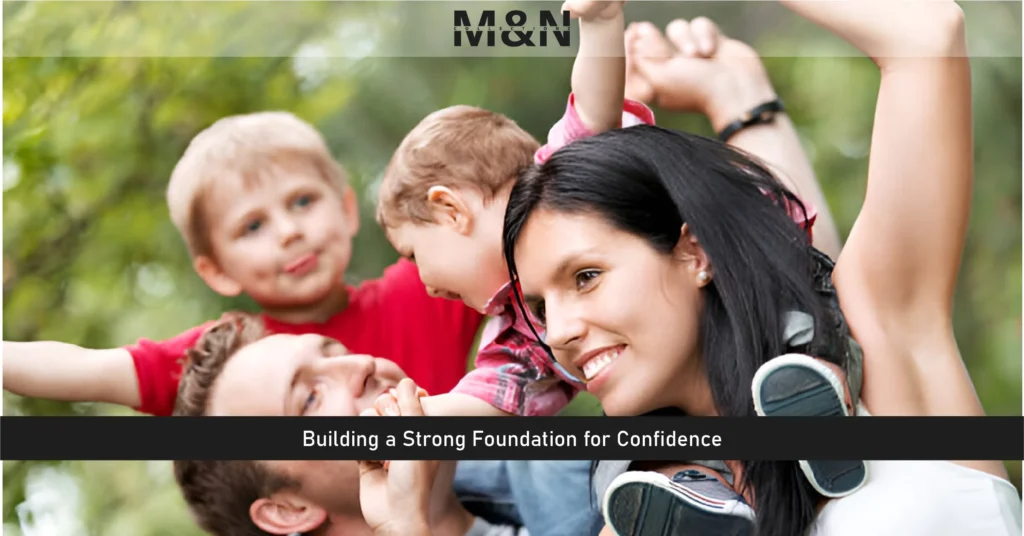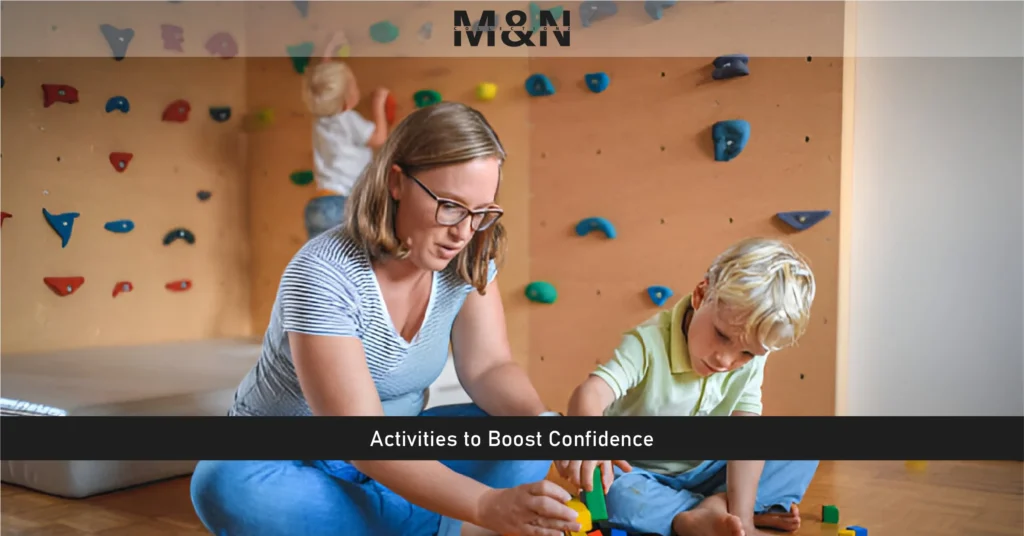How to Raise Confident Kids: Tips for Parents

Ever noticed how some kids walk into a room like they own it, while others hesitate at the door? Confidence isn’t something children are just born with—it’s built over time, with the right support.
As parents, we all want our kids to believe in themselves, take on challenges, and bounce back from setbacks. But how do we nurture that kind of self-assurance without pushing too hard—or worse, holding them back?
The good news? Confidence isn’t about being the loudest or the most outgoing. It’s about helping kids trust their abilities, embrace mistakes, and grow from experiences. In this guide, we’ll explore practical, research-backed strategies to raise confident kids—without the pressure.
Table of Contents
1. Understanding Confidence in Children
Before we jump into how to build confidence, let’s talk about what it really means.
What Is Confidence, and Why Does It Matter?
Confidence isn’t about arrogance or always feeling sure of yourself. It’s about:
- Believing in your ability to learn and adapt.
- Feeling secure enough to try new things.
- Handling setbacks without falling apart.
Kids with healthy self-confidence are more likely to:
- Take on challenges
- Speak up for themselves
- Form strong friendships
- Recover from failures faster
Confidence vs. Arrogance: What’s the Difference?
Some parents worry that too much confidence leads to cockiness. But there’s a key difference:
- Confident kids believe in themselves without putting others down.
- Arrogant kids often overestimate their abilities and dismiss others.
The goal? Raising kids who are secure, not superior.
Signs of a Confident Child vs. Low Self-Esteem
| Confident Kid | Child with Low Confidence |
|---|---|
| Willing to try new things | Avoids challenges |
| Speaks up when needed | Hesitates to share opinions |
| Handles mistakes calmly | Gets upset or gives up easily |
| Accepts compliments well | Brushes off praise |
If your child leans toward the second column, don’t worry—confidence can be nurtured!
2. Building a Strong Foundation for Confidence
Confidence grows from security, independence, and positive role models. Here’s how to lay the groundwork.
Provide Unconditional Love & Support
Kids need to know they’re loved no matter what. When they feel emotionally safe, they’re more willing to take risks.
Try this:
- Say, “I love you even when things are hard.”
- Avoid conditional praise like “I’m proud of you only when you win.”
Encourage Independence (At the Right Age)
Overprotective parenting can backfire. Instead, let kids:
- Choose their outfits (even if mismatched).
- Pack their own school bag (forgetfulness teaches responsibility).
- Solve small problems before jumping in to help.
Example:
If your 6-year-old can’t open a snack, instead of doing it for them, say, “Let me show you how—then you can try!”
Model Confidence Yourself
Kids absorb how you handle stress, mistakes, and new situations.
Ask yourself:
- Do I apologize when I’m wrong?
- Do I talk positively about my abilities?
- Do I handle setbacks with patience?
Your actions speak louder than words.

3. Effective Communication Strategies
Words shape how kids see themselves. Here’s how to communicate in a way that builds confidence.
Use Positive Reinforcement the Right Way
Not all praise is equal. Instead of:
“You’re so smart!” (focuses on innate ability)
Try “You worked really hard on that!” (praises effort)
Why? Kids praised for effort are more likely to embrace challenges.
Teach a Growth Mindset
A growth mindset means believing skills improve with practice.
How to encourage it:
- “Mistakes help us learn.”
- “Remember when you couldn’t ride a bike? Now look at you!”
Active Listening & Validation
When kids feel heard, they trust their own voice.
Instead of: “Don’t be scared!”
Try: “It’s okay to feel nervous. What would make this easier?”
4. Activities to Boost Confidence
Confidence grows through action. Try these confidence-building activities:
Encourage New Experiences
New challenges teach kids they’re capable.
- Sports (teamwork + perseverance)
- Drama class (public speaking practice)
- Art (creative expression without judgment)
Role-Playing & Problem-Solving
Practice tricky social situations at home:
- “What if someone cuts in line?”
- “How do you say no politely?”
Small Wins & Goal Setting
Break big tasks into tiny steps.
- “First, tie your shoes. Next, we’ll work on double knots!”

5. Handling Setbacks & Fears
Failure is part of confidence-building—if handled right.
Normalize Failure
Share stories of famous failures:
- Michael Jordan was cut from his high school team.
- J.K. Rowling’s Harry Potter was rejected 12 times.
Avoid Overprotection
Let kids struggle (safely). If they forget homework, let them face the consequence once—they’ll remember next time.
Help Them Cope with Criticism
Teach: “Feedback helps us improve—it’s not about you as a person.”
6. Common Parenting Mistakes That Hurt Confidence
Even well-meaning parents can accidentally undermine confidence. Avoid:
- Overpraising → Kids feel pressure to be perfect.
- Comparing to siblings/peers → “Why can’t you be like…?”
- Solving all their problems → Robs them of resilience.

Conclusion:
Building confidence in children isn’t about quick fixes or empty compliments—it’s about creating an environment where they feel safe to try, fail, and try again. Remember:
Key Takeaways:
- Confidence grows from security (unconditional love) + challenge (appropriate risks)
- Your words matter—praise effort, not just results
- Every child develops at their own pace—comparisons help no one
- Small, daily actions create lasting confidence more than grand gestures
The most confident adults aren’t those who never failed—they’re the ones who learned that setbacks don’t define them. As parents, our job isn’t to clear every obstacle, but to give our kids the tools and belief that they can handle what comes their way.
Try This Today: Pick one small area where you can step back and let your child take the lead—whether it’s ordering their own meal at a restaurant or solving a minor disagreement with a sibling. Notice how they rise to the occasion when given the chance.
Also Read: The Best Eco-Friendly Toys for Kids in 2025
FAQs
How to build confidence in a shy child?
Start with small social interactions, praise effort over results, and avoid labeling them as “shy” which can reinforce the behavior. Gradually expose them to new experiences at their comfort level.
What activities boost kids’ confidence most?
Team sports develop social skills, creative arts encourage self-expression, and household responsibilities build competence. Structured activities with clear milestones work best for measurable progress.
Can too much praise harm confidence?
Excessive generic praise (“You’re so smart!”) creates pressure, while specific process praise (“You worked hard on that!”) builds resilience. Focus on effort and strategies rather than innate abilities.
What’s the biggest parenting mistake for confidence?
Overprotecting kids from challenges prevents them from developing problem-solving skills. Allow safe struggles and resist the urge to immediately rescue them from every difficulty.
At what age should confidence-building start?
Begin in toddlerhood with simple choices and gradually increase responsibilities. The preschool years (3-5) are especially crucial for foundational self-concept development.




